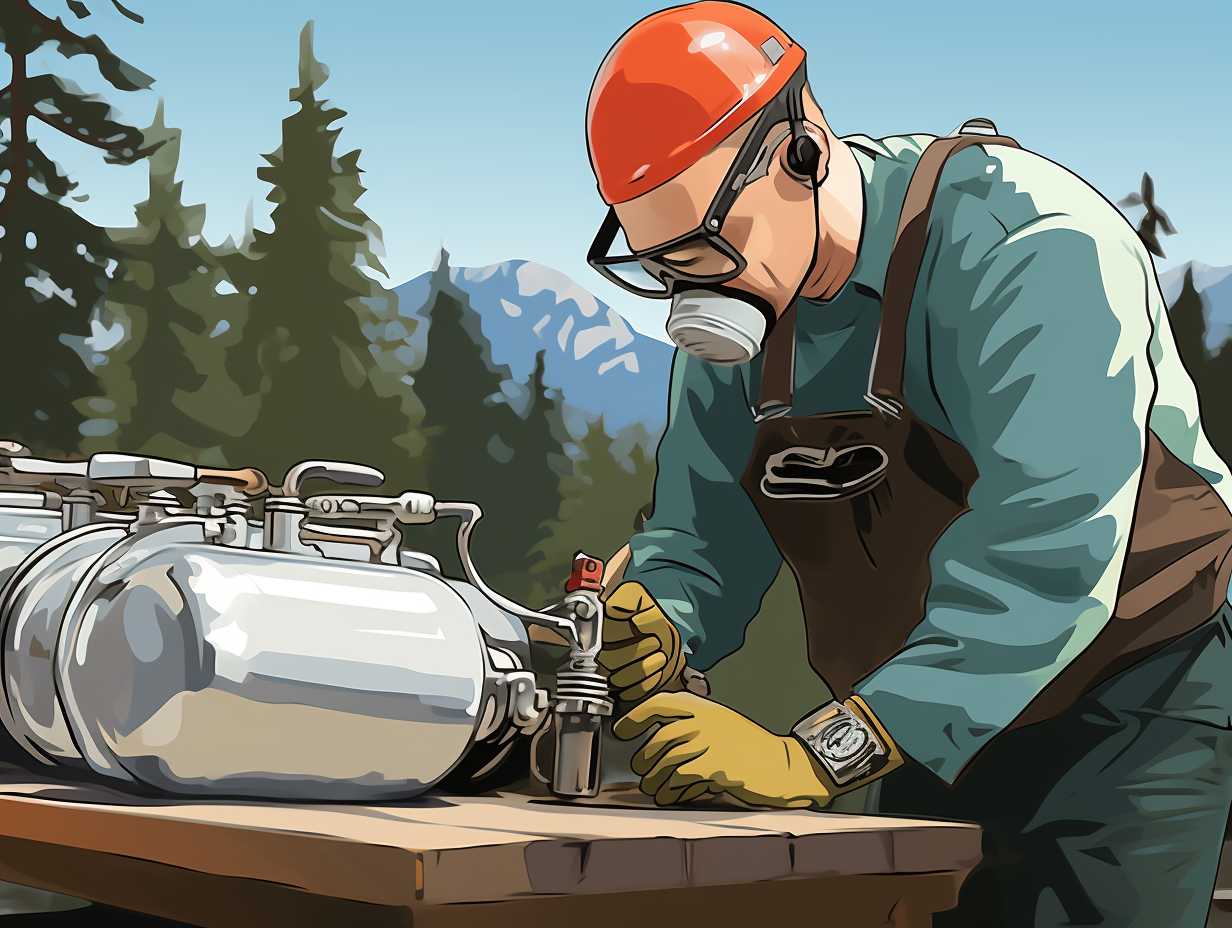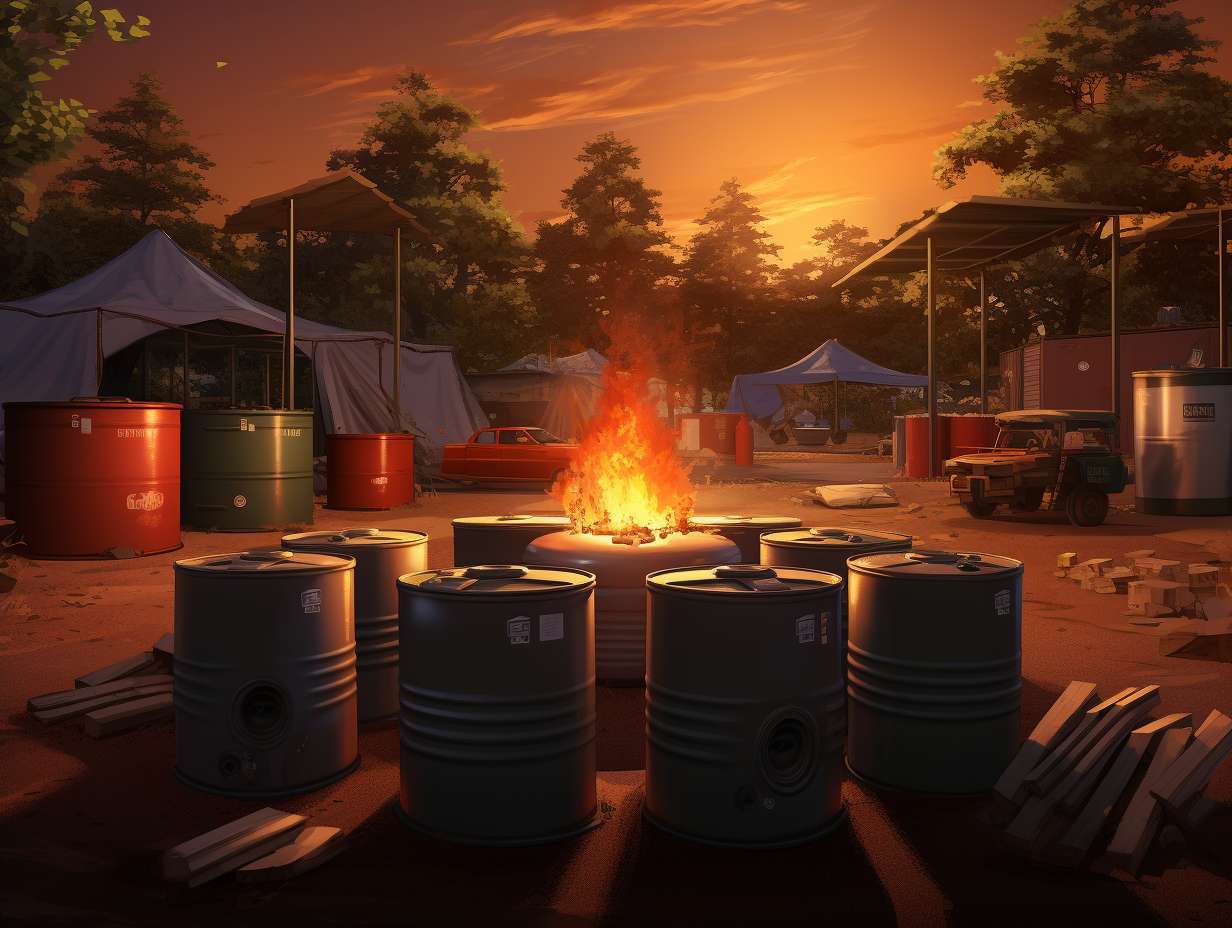
Are Camping Propane Tanks Refillable
Table Of Contents

Did you know that over 80% of camping propane tanks can be refilled? That’s right, instead of constantly buying new ones, you have the option to refill them and save both money and resources.
But how exactly does the process work? Are there any safety considerations you should be aware of? And what about the cost savings and environmental advantages of refillable propane tanks?
In this discussion, we will explore all these questions and more, providing you with the information you need to make an informed decision about the refillability of camping propane tanks.
So, let’s dive in and discover the benefits of refilling your propane tanks.
Key Takeaways
- Refilling propane tanks is a cost-effective choice as it is cheaper than buying new tanks and can be used multiple times, reducing overall costs.
- Refilling propane tanks offers more availability options with refill stations widely available, making it convenient for campers.
- Refilling propane tanks is a sustainable choice that reduces waste and carbon footprint, contributing to environmental preservation.
- Refillable propane tanks provide cost savings in the long run, eliminate the need for constant new tank purchases, and offer peace of mind with trusted and safe refilling.
Benefits of Refilling Propane Tanks
When it comes to camping, there are several benefits to refilling your propane tanks instead of buying new ones. One of the main advantages is the cost comparison. Refilling your propane tanks is much cheaper than purchasing new ones. While the initial cost of a refill may be slightly higher, it’s a one-time expense, and you can use the same tank multiple times, reducing your overall costs in the long run.
Another benefit is the availability options. When you refill your propane tanks, you have more flexibility in terms of where and when you can do it. Propane refill stations are widely available, whether it’s at camping supply stores, gas stations, or even some grocery stores. This means that you can easily find a refill station near your camping site, allowing you to top up your tanks whenever needed.
Furthermore, refilling your propane tanks is a more sustainable choice. By reusing your tanks, you contribute less waste to the environment compared to constantly buying new ones. It’s a small step towards reducing your carbon footprint and preserving our natural resources.
Process of Refilling Camping Propane Tanks
To refill your camping propane tanks, simply locate a nearby propane refill station and follow these straightforward steps.
The process explanation for refilling camping propane tanks is relatively simple. First, ensure that you have the necessary refilling equipment, which typically includes a propane tank, a propane hose, and an adapter.
Once you have the equipment ready, take your empty camping propane tank to the refill station. Hand over your empty tank to the attendant, who’ll inspect it for any damage or signs of wear. If your tank passes inspection, it will be connected to a refilling system using the propane hose and adapter.
The attendant will then open the valve on the refilling system, allowing propane to flow into your tank. The tank will be filled to the proper level, and once it’s full, the attendant will close the valve and disconnect the tank.
Safety Considerations for Refilling Propane Tanks

For a safe and successful refill of your propane tanks, it’s important to consider several key safety precautions. Proper handling and adherence to regulations are crucial to prevent accidents and ensure the well-being of everyone involved.
First and foremost, always make sure to follow the guidelines provided by the propane supplier or the refilling station. These guidelines outline the proper procedures for handling and refilling propane tanks. It’s essential to familiarize yourself with these instructions and strictly adhere to them.
When handling propane tanks, it’s important to wear appropriate protective gear, such as gloves and safety glasses, to prevent any potential injuries. Additionally, it’s crucial to ensure that the tanks are in good condition, free from any leaks or damage. If you notice any issues, don’t attempt to refill the tank and instead seek professional assistance.
Furthermore, it’s important to understand and comply with the regulations set forth by local authorities regarding the transportation and storage of propane tanks. Familiarize yourself with the regulations specific to your area to avoid any legal complications.
Lastly, always exercise caution and use common sense when handling propane tanks. Keep them away from open flames, heat sources, and flammable materials. Store them in well-ventilated areas and away from any potential ignition sources.
Cost Savings With Refillable Propane Tanks
Now let’s explore the potential cost savings that come with using refillable propane tanks. When it comes to cost, refillable propane tanks offer significant advantages over disposable ones. Refillable propane tanks can be refilled multiple times, eliminating the need to constantly buy new tanks, which can save you money in the long run.
Additionally, refillable propane tanks are subject to refill regulations that ensure the tanks are inspected and certified for safe use. This means that you can trust that the tank you’re refilling is in good condition, reducing the risk of leaks or other safety issues.
In terms of maintenance, refillable propane tanks require regular inspection and testing to ensure they’re safe to use. This includes checking for leaks, inspecting the valves and fittings, and ensuring the tank is properly secured. While there’s a maintenance cost associated with refillable propane tanks, it’s typically minimal compared to the cost of purchasing disposable tanks repeatedly.
Environmental Advantages of Refillable Camping Propane Tanks

Using refillable camping propane tanks offers several environmental advantages that make them a sustainable choice for outdoor enthusiasts. When compared to disposable propane tanks, refillable tanks contribute to reducing waste and promote sustainable camping options. Here are three key reasons why refillable propane tanks are better for the environment:
-
Reduced Waste: Disposable propane tanks are typically used once and then discarded, adding to the growing issue of waste accumulation. In contrast, refillable tanks can be reused multiple times, minimizing the amount of waste generated during camping trips.
-
Lower Carbon Footprint: Refillable propane tanks are often made from sturdy materials that can withstand repeated use. By choosing to refill instead of disposing of these tanks, you’re helping to reduce the demand for new production and the associated carbon emissions.
-
Energy Efficiency: Refillable propane tanks tend to be larger in capacity than disposable ones, allowing for longer camping trips without the need for frequent replacements. This increased efficiency means fewer resources are used in the production and transportation of propane tanks overall.
Frequently Asked Questions
How Long Does a Propane Tank Typically Last When Camping?
When camping, a propane tank typically lasts for about 10-14 days, depending on usage. To safely transport and store propane tanks, remember to keep them upright and secure, away from heat and open flames.
Can I Refill My Propane Tank at Any Gas Station or Do I Need to Go to a Specific Location?
You can refill your propane tank at most gas stations, but it’s important to follow safety precautions. Make sure the station is equipped to handle propane refills and always double-check for leaks before using.
Are There Any Regulations or Restrictions on Refilling Propane Tanks?
There are regulations and restrictions when it comes to refilling propane tanks. It is important to follow these guidelines to ensure safety and compliance with local laws.
Can I Refill a Partially Empty Propane Tank, or Do I Need to Wait Until It’s Completely Empty?
You can safely refill a partially empty propane tank. However, it’s important to follow safety precautions when refilling. Don’t wait until it’s completely empty; just make sure to use caution and follow proper guidelines.
Are There Any Special Maintenance or Care Instructions for Refillable Propane Tanks?
When it comes to refillable propane tanks, there are some special maintenance requirements and care instructions to keep in mind. It’s important to follow these guidelines to ensure the safe and efficient use of your tank.
Conclusion
So, next time you’re planning a camping trip, consider investing in refillable propane tanks.
Not only will you save money in the long run, but you’ll also be reducing your environmental impact.
It’s like having a trusty companion on your outdoor adventures – always there to provide warmth, cook your meals, and keep the good times going.
Refillable propane tanks are truly the fire that never burns out.
Disclaimer: Some information is provided through AI. Users should always conduct their own research and consult with qualified professionals before making any decisions.Affiliate information declaration: We may earn revenue from the products referred on this page and participate in affiliate programs.


